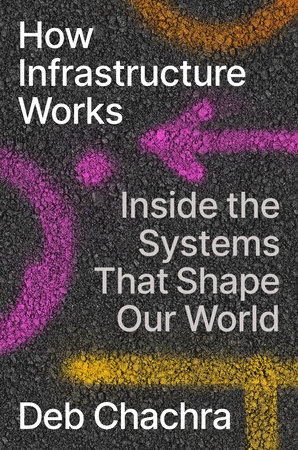ssweeny reviewed How Infrastructure Works by Deb Chachra
Definitely worth a read and and doesn't require a STEM background to appreciate.
4 stars
I thought this one started off a bit slow and anecdote-heavy which is a complaint I've had about several recent nonfiction books I've read. Fortunately this time those anecdotes were just laying the emotional groundwork for a treatise on how our (humans in general, but particularly humans in wealthier countries) lives are only possible as we know them because of big investments in infrastructure made decades ago.
I appreciated the author's emphasis on needing not just to invest in maintenance of what we have but a hopeful tone about what's possible if we rethink our tendency toward large centralized structures and consider smaller, more localized solutions that can be combined (like a series of smart micro-grids for power that use wind in windy areas or solar in sunny areas but also use storage and interconnects to let those solutions complement and supplement each other).

